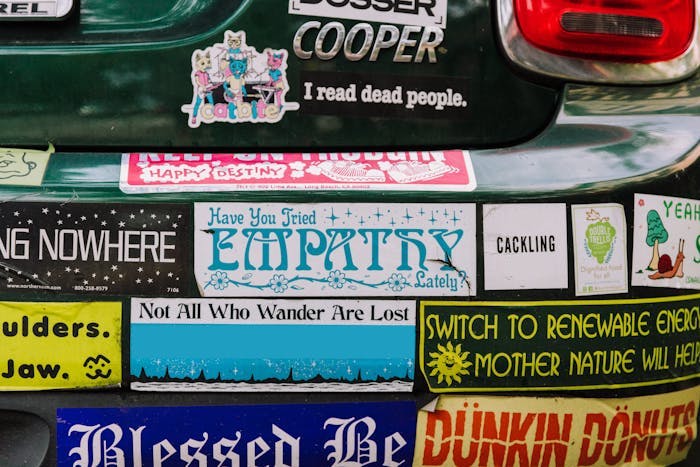“How in the world do I end this?”
This is a common question I hear from students who are drafting their college-application essays, and it emerges right at the moment they reach for reflection. “Where do I go from here?”
The worry is understandable. Conclusions are hard. For everyone. I write for a living, and I’ve often asked myself this same question. But I can confidently tell you: this is not a liability. Not knowing your ending when it’s time to write doesn’t mean you have nothing distinct to say or you picked the wrong topic. In fact, if you proceed with curiosity, this state of not knowing can be exactly where you want to be.
Really. Stay with me ….
Cara shares her inspiration for this post.
If I take the reflections from a ballet dancer and I tack them onto a football player’s essay, do they still work? And how about a mathematician's, or a poet's? No matter how well-written the conclusion, if it fits, it’s not enough. It’s a bumper sticker. We’ve seen it before and it’s too widely applicable. I know we still have work to do.
At Hillside, you’ll often hear us talk about stories only you can tell, and finding those stories is the first act. I will ask a ton of questions about the details of your experiences. I am looking for moments, for the particulars that have stuck with you, what you pay attention to. So that’s what I’m after first: your story. You’ve been telling stories your whole life. You’re already good at it. Once we’ve gathered moments, writing (and reading) becomes a lot more fun.
But authentic self-reflection — those sections of your essay in which you share the personal meaning of your story — that’s very different from storytelling. It’s not something you do every day; you have to learn that skill.
When students get stuck toward the end, even if they like what they’ve written so far, they often react by reaching for big statements about learned values in an effort to neatly wrap things up: I stepped outside my comfort zone. I realized that competence requires commitment. I learned the importance of patience, of acceptance, of family.
Colleges may be pleased to know that you’ve learned a lesson. But such statements are common destinations, even if you’ve blazed your own path to get there. Your goal is to stand out — but when you arrive, the place is crowded.
You may not recognize this at first, because to reach for a lesson that you’ve heard before feels good. It’s relieving to know that your story does have a lesson. But let me share what I call The Bumper-Sticker Test. If I take the reflections from a ballet dancer and I tack them onto a football player’s essay, do they still work? And how about a mathematician’s, or a poet’s? No matter how well-written the conclusion, if it fits, it’s not enough. It’s a bumper sticker. We’ve seen it before and it’s too widely applicable. I know we still have work to do.
If your readers are going to get to know — and to believe — you, they need to know something more important than the fact that you learned a common lesson. They need to know how the lesson changed you. The details that reveal those personal changes are already inside the story you know, and my job as your coach is to help you discover what’s beneath the surface. If we keep digging, keep asking more questions, we will find a conclusion as unique to you as the story you’ve told.
Perhaps your essay is about discovering that you love a piece of artwork that you used to hate. Instead of leaning on a bumper sticker (I learned that art is an acquired taste), tell me what you now see in the art that you didn’t before. And tell me how seeing this has changed how you see other pieces of art, how it has changed the way you see something completely unrelated to artwork.
Or maybe your moment came from working at McDonald’s when a customer hated their Big Mac. Tell me again what they said to you. How did you handle it? Had you ever encountered a situation like this before? Did you end up with Coke and ketchup all over your uniform? If you’ve ended your draft with some version of I learned to be patient, I bet there’s something more personal waiting within your story. Did you find yourself saying something you later wished you’d stopped as it tumbled out of your mouth? Or did you discover that, for the first time, your inside voice stayed … inside? (That’s a particular kind of patience!) Either way, what changed for you?
When we see these moments again through your eyes, how you learned to be patient no longer ends with a bumper sticker. In fact, that story may not be about patience at all. We won’t know until we explore further. Yours isn’t a universal takeaway you can tack on any essay. It’s found in your lived experience, and there is only one writer who is an authority on that.
Cara is Head of Coaching Operations and a Hillside coach.




